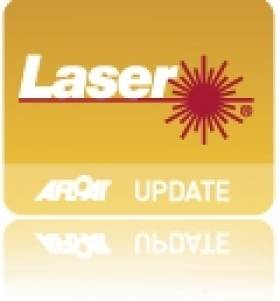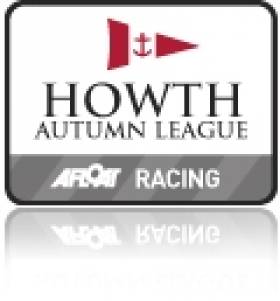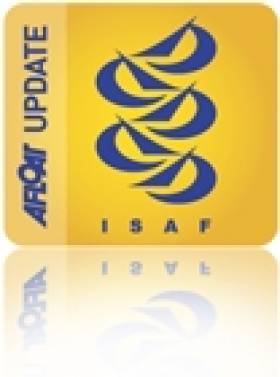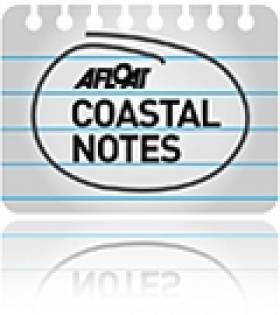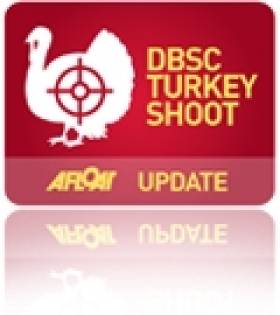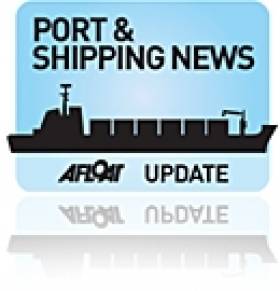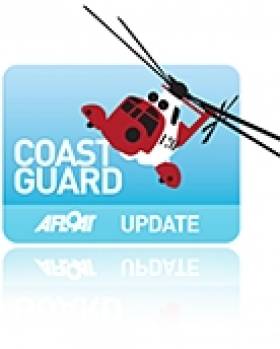Displaying items by tag: Dublin Bay
Dublin Port Tugs Making Magic 'Rainbow' Happen
The spectacular effect of the life-size rainbow had never been achieved before in Ireland. Steve Green, the director of the advertisement used a 35mm film, with footage from HD cameras, including one mounted on the helicopter which hovered over the 'new' landmarks of the 'Docklands'.
The imaginative advertisement was created by Sweet Media, the production company chosen to produce the campaign, under the direction of the National Lottery's advertising agency, DDFH&B. The soundtrack for 'Making Magic Happen' is the appropriately titled 'Pocketful of Rainbows', sung by Elvis Presley. The version used is Take 16 from the 1960 recording sessions for the 'G.I. Blues' soundtrack.
As for the stars of the advert, the tugs are named after Irish figures, Shackleton, named in honour of Antartic explorer Sir Ernest Henry Shackleton and Beaufort, named after Navan-born, Sir Francis Beaufort, who created the world-renowned wind-scale measurement.
The 50-bollard ton tugs cost €6m each and were built at the Astilleros Zamakona Shipyard, Bilbao. In March the tugs officially entered service after a joint naming ceremony was held in Dublin Port.
To view the tugs in water-firing, making magic mode!... click the link here
Greagsbey in Front at Howth Laser Frostbtes
Papillon First Home in Howth Brass Monkey Race
ISAF Sets Out Stall at Annual Conference
ISAF President Göran Petersson set out the challenges ahead as he delivered his opening address, the President's Report, to the ISAF Council members during their first day of meetings at the 2010 ISAF Annual Conference held in Athens, Greece this week. Some of it has relevance to the sport here in Ireland given Dublin Bay is the host for the 2012 ISAF Youth Worlds and indeed the annual conference in the same year. The full transcript of the President's Report is below....
'Your Majesty, Ladies and Gentlemen, Members of the Council
After a number of Council meetings with relatively light agendas we now have a fairly lengthy agenda for this meeting so I will keep this opening short.
We will hear, as usual, reports about the events that took place this year later in the agenda.
At this point I would like to highlight the success of the first Youth Olympic Games that were held in August in Singapore. Although Teo-Ping is absent I would like to thank him very much; to thank his team and to thank the Singapore Sailing Federation.
We should be proud and happy for our good friend, former Vice-President of ISAF, Ng Ser Miang, who was the Chairman of the Organizing Committee. This event is here to stay. The IOC will evaluate the Youth Olympic Games in the near future together with the sports federation, but we already know this event will be repeated because the next venue will be in China. I am sure, however, that this event will remain on the programme for the IOC.
It was very interesting to see how some sports took this event as an opportunity to showcase their sport in a new and exciting way. It was clearly demonstrated, that there was a lot of thinking outside of the box by all the sports.
For example basketball was played with teams of three on three with two competitions running on the same court at the same time. This fast paced game was played on a half court using only one or the same hoop for both teams. The stadium was a temporary structure and the scene was supposed to resemble street basketball and the public enjoyed watching the game whilst listening to loud pop music.
Canoe/kayak saw head to head sprint racing on a new figure of eight course and triathlon had mixed gender team relays. Actually quite a few sports had, interestingly enough, mixed gender events or mixed gender relay events.
The sailing events were a great success and I have a few observations: First of all, ISAF chose to go for the younger age group. As you remember we had to choose an age group of two birth years under eighteen. We chose the age group 15 and 16 and were one of only three sports that chose this age range which I feel was highly appreciated by the IOC. The choice of equipment for this age range was excellent. The transfer to the Byte CII was absolutely no problem for the young sailors, and this was something that we were concerned about.
Particular highlights for me though were the lighting of the flame by the Sailor Darren Choy from Singapore and, of course the Thai windsurfing girl, Siripon Kaewduang-Ngam, who won gold winning seven out of the eleven races. It was very good to see her nominated for the ISAF Rolex World Sailor of the Year Awards.
I would like to now highlight some areas the Federation has been working on that perhaps do not get as much attention from the Council because they do not involve submissions.
The Environment
Much work has already been done by many of our MNAs. ISAF will now develop three products that may be helpful for the world of sailing on the environmental front. Firstly, we will produce sustainable Events Guidelines for event organizers on implementing green measures. The guidelines are not only for sailing event organizers but can be used as a template for MNAs to translate and implement for use in their own countries.
Secondly, as you know, ISAF already has an Environmental Code, but the responses received indicate that the document may be a little too rigid. Work will be undertaken to improve the Code and develop it to be the 'ISAF Code of Environmentally Friendly Behaviour'. The aim is to approach issues in an accessible and positive way.
Thirdly, ISAF already has a lot of training material for different areas, Race Management Manuals, the Judges Manuals, Training Material and so on and there is a clear opportunity for us to include the care of the environment in these sorts of publications. We will ensure that an environmental paragraph will be included in all publications. Thank you Teresa for driving this important subject forward and if anyone has any questions or suggestions, I would suggest that you talk to Teresa.
Training
This year has seen many exciting developments in the area of Training and Development and we have all seen the benefit that these programs have in the relationship, that ISAF has with its Members through the ISAF news and the new social networking and channels that have been used to drive our message home to the wider global audience.
We have seen ISAF run Technical Courses for Coaches across a diverse number of its Member Nations with Iceland, Oman, South Africa, Cayman Islands, Indonesia, Qatar, Trinidad and Tobago, Myanmar, El Salvador, Morocco and Sudan all successfully applying for and hosting Olympic Solidarity funded Level 1, 2 and 3 Courses. The ISAF Instructors will have trained in excess of 100 Learn-to-Sail Coaches from over 15 countries this year. The total number of ISAF organized and IOC funded Technical Course for Coaches that ran between 2005 and 2009 was just five. With eleven such courses run in 2010 alone ISAF has been gaining a good reputation within Olympic Solidarity for helping its member's access this funding. Closer links with our NOCs is vital to help this development continue.
2010 has also seen ISAF become only the sixth International Federation to host a Sport Specific Scholarship for Coaches. This unique 8 week Course was piloted in February this year with a candidate from South Africa and after a presentation to the IOC to get official status, the first formal Training Scholarship course finished at the end of October with four National Training Managers and Youth Development officers from Turkey, South Korea, the Cook Islands and Peru joining together in a common aim, to learn how to run and manage all aspects of a National Sail Training Program. With 2 courses planned per year, we are currently taking applications for a maximum of 6 per course and have nearly filled one course already. The IOC has been very supportive of this Course and is working closely with our Training Manager to help ISAF's MNAs stand as good a chance as possible of gaining funding to enable participation.
The Executive Committee fully acknowledges the tremendous work of the Training Commission to set up these programs and its valuable guidance to our new Training Manager in their implementation. Without the hard work of the Training Commission this would not have been possible. As the Commission successfully reached the targets that they were set and have given the Training Department the tools to be able to take over, the Executive decided to disband the Commission re-focusing parts of its role to the Development & Youth Committee, under the guidance of former Training Commission member, Olivier Bovyn. Other responsibilities have been passed on to Vice President in charge of Development, Nazli Imre who, working with the Staff, can now monitor these new programs and move forward to work on the targets laid out in the ISAF Strategic Plan.
This conference is a great chance for all of us to observe at first hand the interest that this valuable contribution is generating amongst our members. The Connect to Sailing Seminar is once again giving practical, specific, simple advice to those that wish to work with ISAF to build a stronger sailing future and the list of our MNAs that are coming onboard is getting longer every day. I am excited to see how this will continue to develop into the future.
Now I would like to turn to the agenda and the meeting that is in front of us. I am sure you have all studied the papers carefully and you will have noticed some very important issues have been put in front of you. It is important to see the ISAF Olympic Event and Equipment submissions in the overall scheme of the Commission's findings. Some important points have been put forward as submissions now because of the time scales involved, and we have to deal with them now.
Council members; you are now in the position of being able to shape the future of sailing. You have been given the options and you have been given an outline of the issues with the background information. You need to set the policy and the direction for the future.
I would like to thank all of you who have given feedback on the Olympic Commission report and I would like to thank the Olympic Commission on the work they have done to review all the comments both general and from the Executive Committee meeting that was held in July. We will hear later from Phil Jones, the Chairman of the Commission, about the progress and the work that was done after May. You will have also seen as a supporting paper, a second report, outlining some additional information along with an explanation and background to the submissions that you have in front of you. '
For more on the 2010 ISAF Annual Conference, including news, interviews with some the key players, meeting papers and more go to www.sailing.org/meetings
Poll Shows Raging Bull as Favourite for ICRA's Boat of the Year
With just 24 hours to go to the announcement of sailing's boat of the year award at tomorrow's Cork harbour ICRA conference the consistent poll topper from Afloat's online survey shows ISORA offshore champion Raging Bull as a clear favourite with 1175 votes. Second is Marinerscove on 873 and Errislannan third on 256 votes. Polling began just over a month ago and 2,600 votes have been cast. See the poll on the left hand column of the home page. There's still time to cast your vote to try and influence ICRA judges!
Potential Oil-Field off Dalkey
"It's another evaluation process which is positive, an encouraging tick in the box. But ultimately it's only exploration-it has to be drilled", said Tony O'Reilly, CEO of Providence. "I'm hoping that'll be 2011, as part of our overall multi-basin programme in Ireland. We've a big programme of activity and the Dalkey Island (Prospect) will be part of that", he added.
The advantage of any potential oil find at the Dalkey Prospect is that the block well is in shallow waters up to 25-metres, compared to Providence deeper offshore projects of Dunquin and Spanish Point. Another factor in drilling off Dublin Bay is that operations are cheaper and safer. The naming of the exploration site after Dalkey, reflects the Kish Basin's relative geographical proximity to that particular stretch of coastline, marking the southern approaches to Dublin Port.
The optimism expressed about the Kish Bank Basin exploration and other fields must be put into context based on the previous track record of drilling around the Irish coast. The Irish Offshore Operators'Association (IOAA) has pointed out that the exploration industry has spent some €3 billion on around 130 drill-well testing sites since 1970, to little effect. The cost of a well operation off the west coast is over €50m and with such high investment, only up to two wells are carried out annually. Of the commercially viable wells, just four-fields have been exploited, but all are gas-based.
The IOAA says that there is potential but there needs to be more exploration activity. In 2009, only two bids for exploration licences were made, compared to 350 offers sought in UK waters. The association blames the lack of exploration due to delays experienced at the Corrib field, an absence of infrastructural development and expensive operating costs.
The association says the rewards are great, citing the Department of Energy's estimate of recoverable reserves of 10 billion barrels of oil. At that amount, the figure is 100 times the state's annual energy consumption of both oil and gas.
Turkey Shoot Attracts 65 Entries on Dublin Bay
With 65 boats on the line last Sunday for the opening race of the Viking Marine Turkey Shoot there's little doubt about the appeal of year round sailing on Dublin Bay. In spite of this week's high winds last Sunday's opening race saw quite a few no finishers due to lack of wind. Handicaps have been adjusted as per the local rules that apply to the series for Sunday's second race. Arwen now goes in the second start and Windshift goes in the fourth start. Race officer Fintan Cairns says "Some boats will be suffering from nose-bleeds this week with the meteoric rise in their handicaps". The series is made possible through the support of Dublin Bay Sailing Club and sponsors Viking Marine, McWilliam One Sails, North Sails & O'Brien Press.
Last weeks results, Race handicaps and start details attached for download below.
Dublin Port Company assist in “Train-For-Trade”
The training programme, also sought to foster economic development and was facilitated by the United Nations Conference on Trade and Development (UNCTAD) , Dublin Port Company experts and local experts from the Ghana Ports and Harbours Authority (GPHA).
Mr. Nestor Galley, the Director-General of GPHA, thanked UNCTAD, Irish Aid and Dublin Port Company for extending the training programme to Ghana and called on all companies at the port to get involved in the project. In addition to ensuring their staff is updated on best practices in port management.
Participants were awarded certificates and were drawn from customs, excise and preventive service (CEPS), MOL Ghana, Ghana Shippers Authority, Ghana Maritime University, Ghana Ports and Harbours Authority (GPHA) and Advanced Stevedoring Company. Other countires involved in the programme include Tanzania, Indonesia, Malaysia and Maldives.
Coast Guard Urges Public Not to Go Out on Exposed Piers
The Irish Coast Guard service today issued an important warning to the public about high winds, gales and flooded areas. This warning comes following a weather warning and a strong gale warning issued by Met Eireann today. Southwest winds veering westerly will strengthen during this afternoon with stormy conditions becoming widespread.
Speaking today, Chris Reynolds Director of the Coast Guard said: "The public is strongly advised not to go out on exposed coasts, cliffs, piers, harbour walls, beaches, promenades or any other coastal areas. The principal dangers from this weather system will be due to gusts of 100 to 140 km/hr expected with the most severe in exposed parts of Ulster and Connacht. Showers will be heavy and thundery at times merging to give longer spells of rain in the north. Highest temperatures 9 to 11 degrees. Huge waves can be whipped up by high seas. These waves can pose hazards to anyone close to the shoreline. In coastal waters, rough seas are often the cause for capsizing fishing vessels. Some of these accidents can take place so quickly that there is no time for the crew to send out distress signals."
He continued: "Do not attempt to cross at fast running river or flood water fords as they may be stronger and deeper than you think. Flooded urban areas may contain many hazards, not least of which include submerged open manholes and downed power lines. The combination of tides, forecasted gale warnings for the next day or so, high sea conditions and swollen rivers may result in very dangerous conditions. Remember to monitor weather broadcasts when travelling and heed the advice of the RSA on road use during severe weather and high winds ."
Specific advice from the Coast Guard today is:
· Stay away from the shoreline and do not engage in water sports;
· Owners of small vessels and fishing vessels in coastal waters should seek shelterand secure them properly with moorings;
· Ships in the open sea should take heeds of weather forecasts and warnings and avoid the sea area with the most treacherous conditions.
Mr. Reynolds ended by saying: "If you do see someone in difficulty in the sea, on the shore, cliffs, lakes or rivers dial 999 or 112 and ask for the Coast Guard. "
Lecture: "Pilots in the Bristol Channel"
in the Poolbeg Yacht Boat Club & Marina (PYBC). The next lecture is "Pilots in the Bristol Channel" by
Tom Cunliffe which is to held on Tuesday 23 November (1930 for 2000 hrs start).
the Sean Moore Road that connects the Merrion Strand Road (southbound) and the East-Link Toll Bridge
(northbound).
For further information on the DBOG lectures contact Tim Magennis on 087 2593113.
and on the PYBC Tel: (01) 668 9983 or logon to www.poolbegmarina.ie/



























